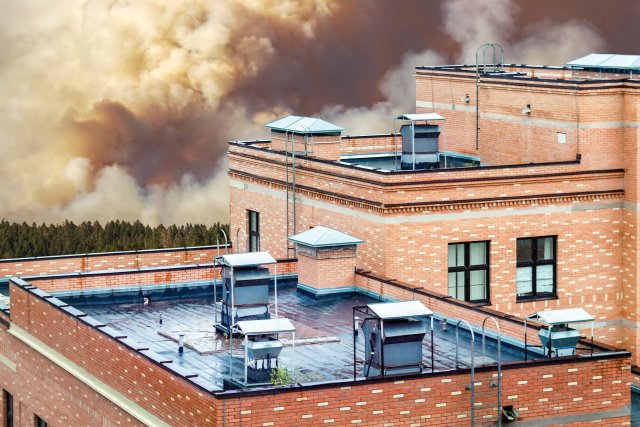Guidance Available to Prepare Schools, Commercial and Public Buildings for Wildfire Smoke

Published June 15, 2021
Smoke in wildfire prone states is a growing health concern, especially for vulnerable populations such as younger people, older people, and those with chronic lung and heart disease. Health experts recommend that people who are vulnerable limit their outdoor activity during high pollution days caused by smoke to reduce their exposure. If air pollution from smoke is extremely high, everyone is encouraged to take precautions.
EPA is collaborating with the National Institute of Standards and Technology (NIST) and ASHRAE, formerly called the American Society of Heating, Refrigerating and Air Conditioning Engineers, to develop guidance to protect those who are in schools, commercial buildings and other public buildings from wildfire smoke exposure. An ASHRAE committee with representatives from EPA, other governmental agencies and industry, was formed to develop the smoke-ready guidelines.
To get information into the hands of building owners and operators quickly this wildfire season, the committee provided interim guidance, which has been released by ASHRAE. The document, Planning Framework for Protecting Commercial Building Occupants from Smoke During Wildfire Events, is the first of its kind to provide information to help building owners and managers prepare for wildfire smoke in their communities and better protect their occupants. Final guidance is being developed by the committee and is expected to be completed in 2022.
“ASHRAE has a long history of providing consensus-based standards and guidance on maintaining indoor air quality in buildings. This new planning framework will be extremely valuable in helping managers of commercial buildings to prepare for wildfire smoke this year,” says Steven Emmerich, a member of ASHRAE and chair of the committee writing the guideline.
The interim document fills a need identified by state, local, and tribal environmental health agencies that are working with building owners and heating, ventilation, and air conditioning (HVAC) companies to address their questions on how to reduce wildfire smoke inside buildings.
“Locally, we’ve found large, commercial spaces to be generally underprepared for wildfire smoke; the ASHRAE framework provides the foundation and expertise we need to address this gap in smoke-readiness,” says Sarah Coefield, air quality specialist in the Missoula City County Health Department, a partner with EPA on wildfire smoke preparedness research. “We are currently plotting how we can locally encourage HVAC technicians and building operators to engage with the material to help our community become better prepared for smoke events,” she said.
The interim guide focuses on reducing exposure to fine particulate matter or PM2.5, an air pollutant that is a main component of smoke, and provides recommendations and processes for developing a smoke readiness plan for commercial buildings that can be implemented when smoke is forecasted and during smoky days. The guide is specifically for commercial buildings and is not intended for single-family homes. EPA offers guidance on how to reduce smoke exposure in single-family homes in an indoor air filtration fact sheet on Airnow.gov.
The interim guidance document is available on EPA’s new Wildfires and Indoor Air Quality in Schools and Commercial Buildings web page.
Related Resources:
